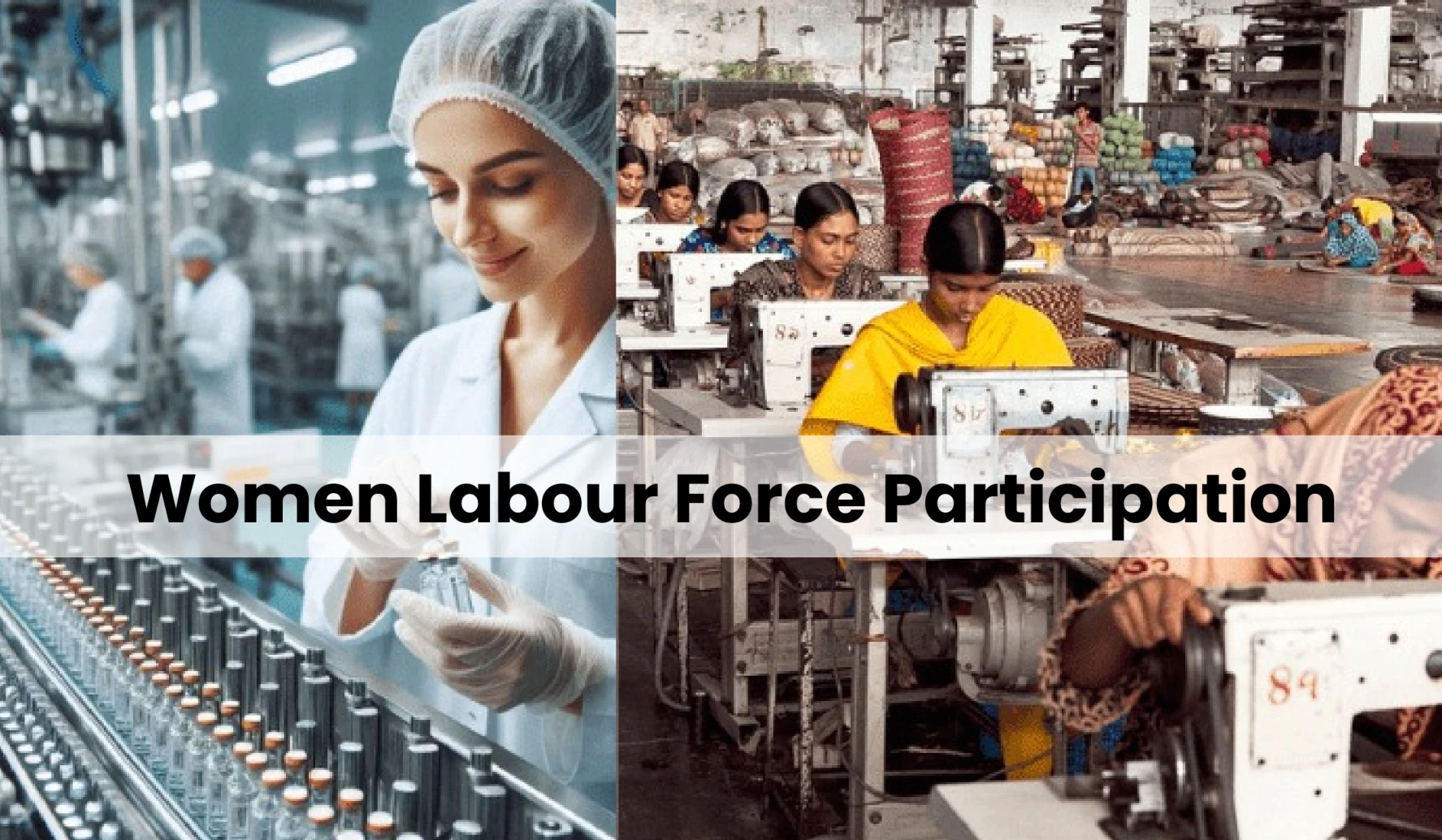Paper delves into key barriers to women’s labour force participation rate (LFPR) and provides actionable insights for policymakers to unlock India’s untapped female workforce potential.
Key Findings
- Status: India’s female labour force participation rate (FLFPR) stands at 37%, well below global average of 47% and Organisation for Economic Co-operation and Development (OECD) average of 67%.
- Key Barriers in FLFPR:
- Unpaid care responsibilities: According to Time Use in India Report 2019, Indian women devote more than twice as much time to unpaid care work as compared to men.
- Absence of formal part-time work options in India: Women end up in informal, precarious jobs, with no job security or social benefits.
- By addressing these two barriers faced by women, female LFPR can be increased by 6%.
Policy Recommendations
- Formalizing part-time work: By setting hourly minimum wages, ensuring job security, and providing access to social security benefits.
- Investing in care infrastructure: Public and private investment in affordable childcare and eldercare facilities yields many benefits to private companies and macroeconomy.
- Promoting gender equality in caregiving: Policies such as paid parental leave for both parents, tax incentives etc.
- Adopting Flexible work policies. E.g. remote work and adjustable schedules.
Initiatives taken by India for Increasing FLFPR:
|







